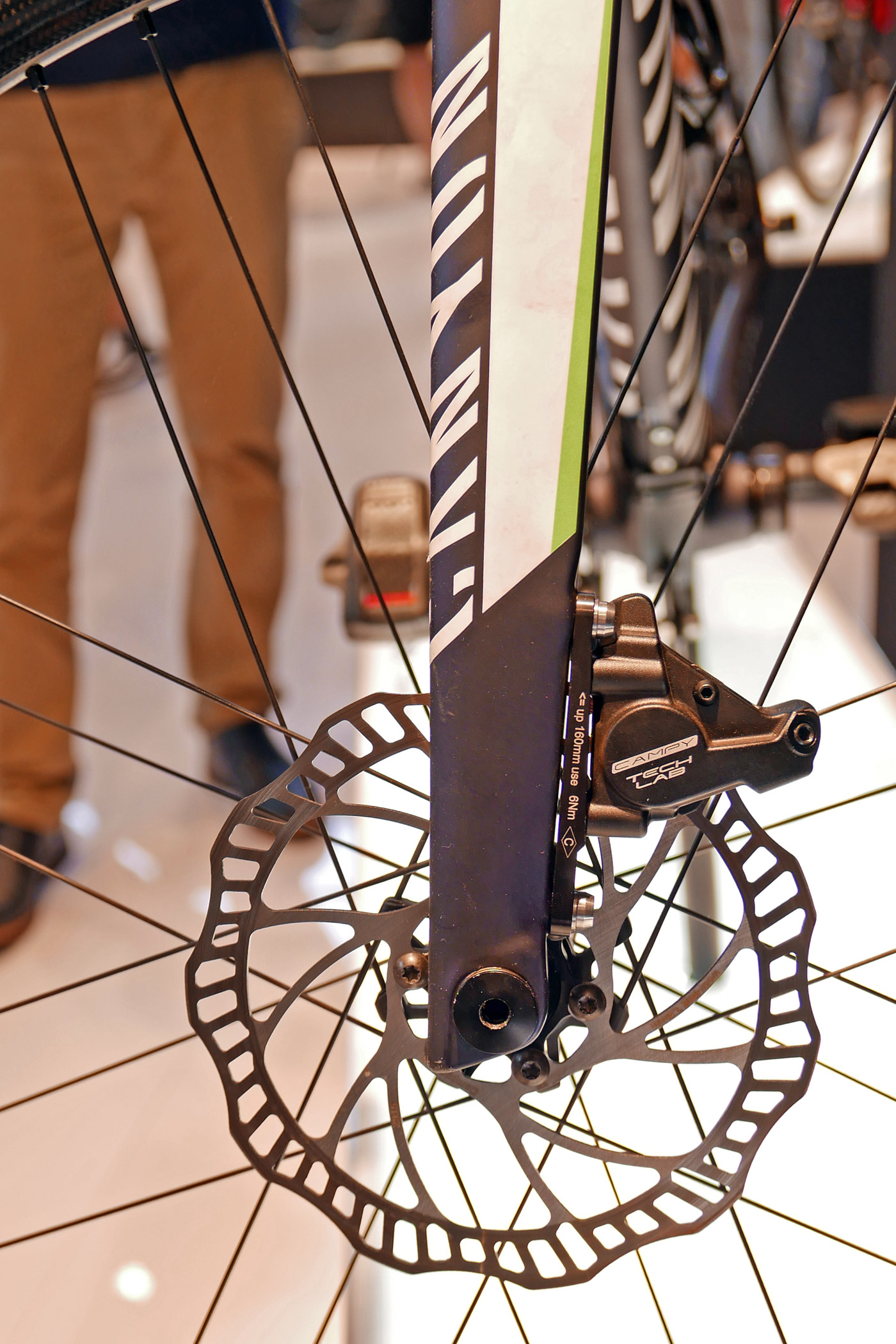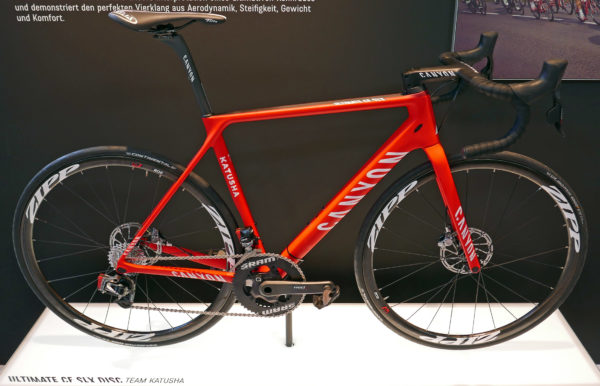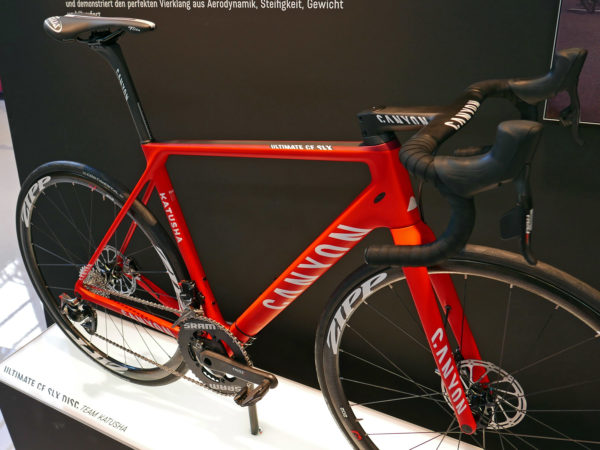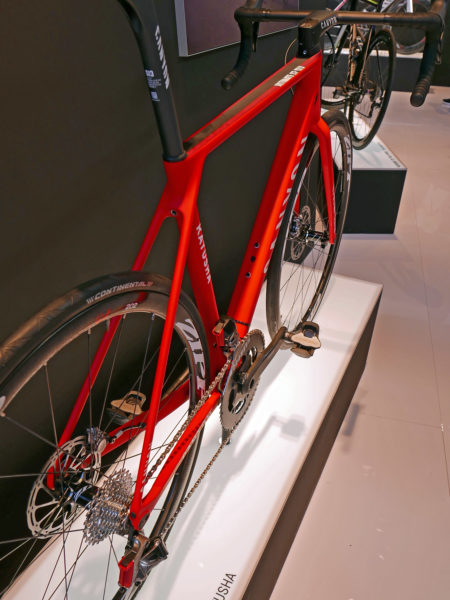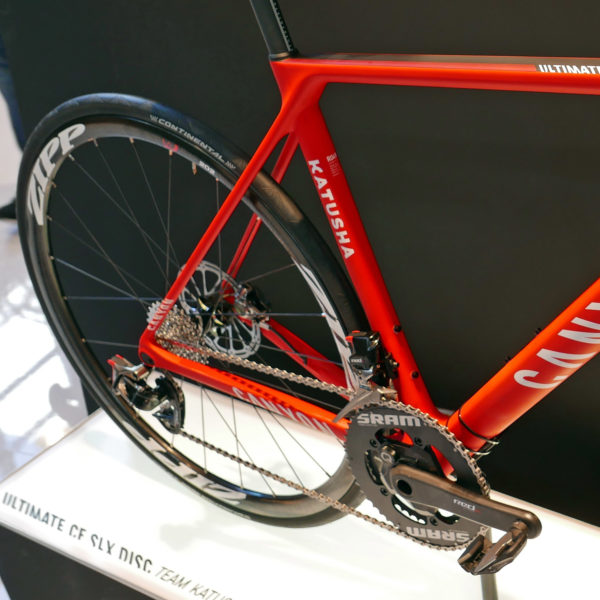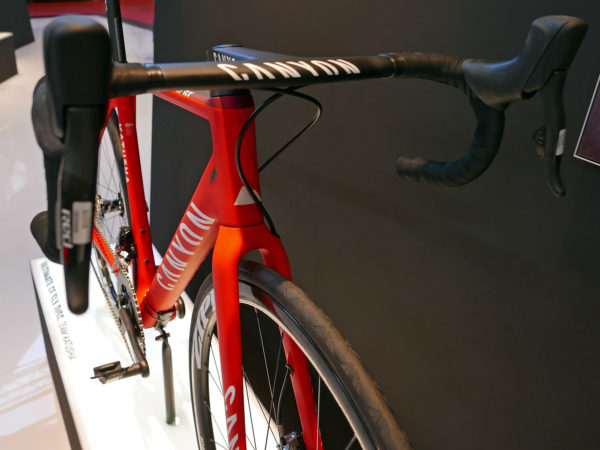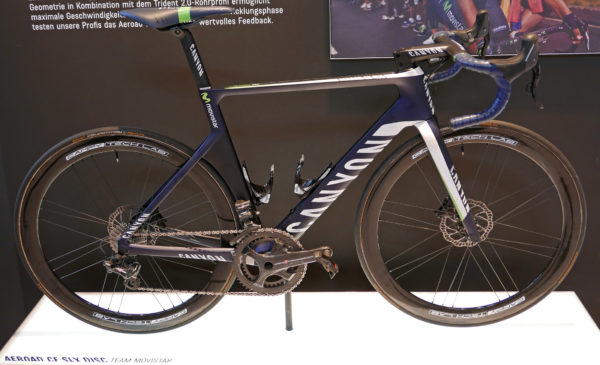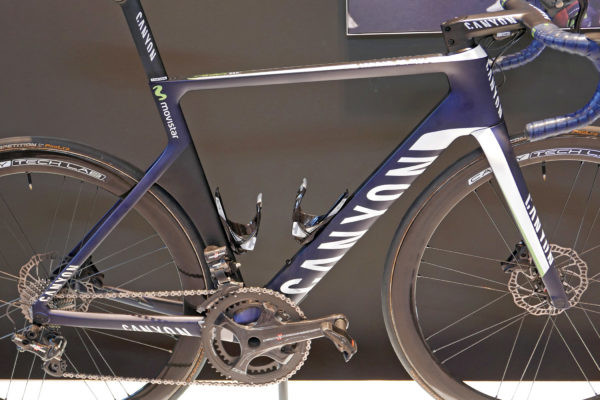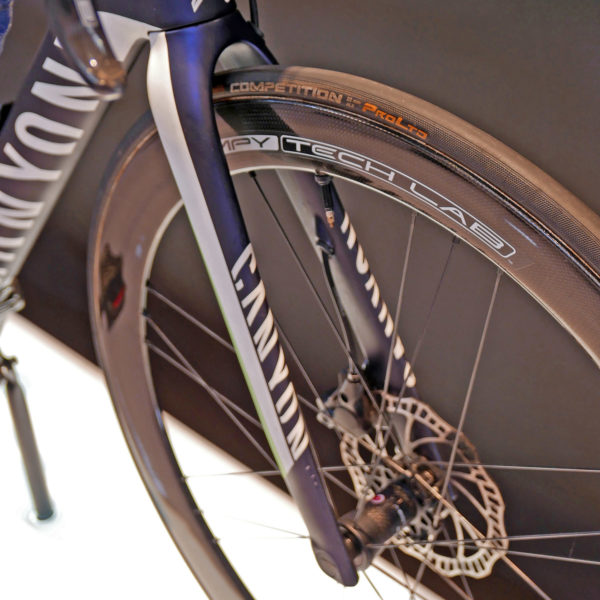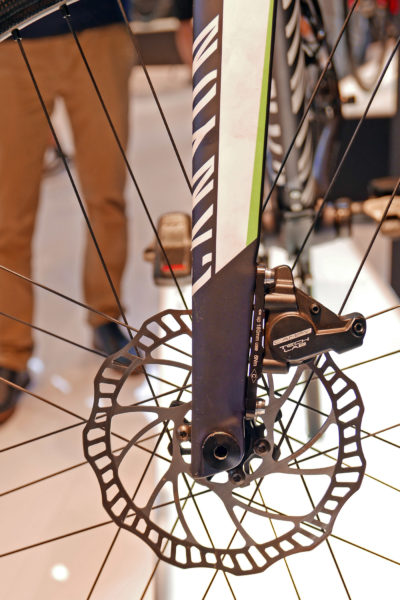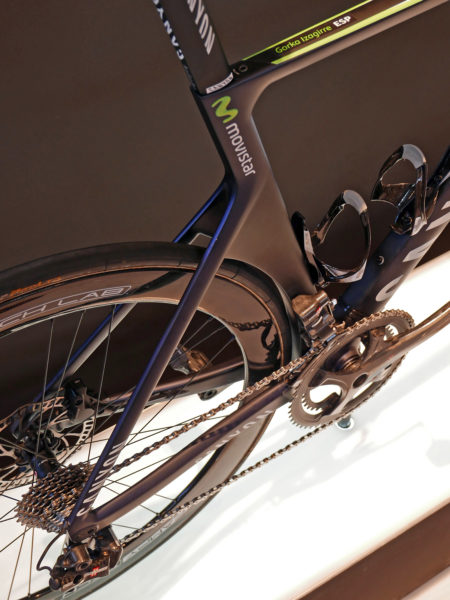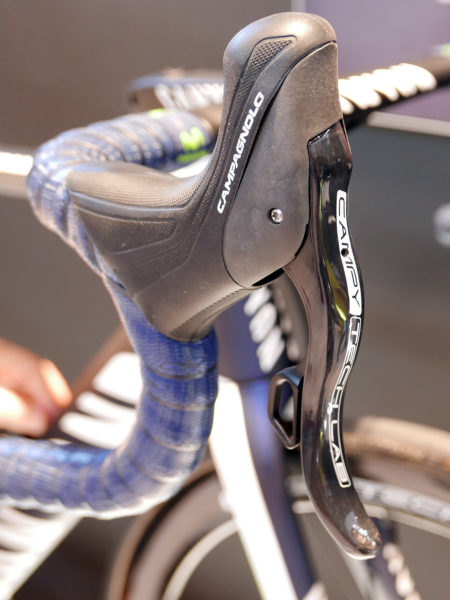Sure they were some of the worst kept secrets of the year, but Canyon has now officially admitted that the disc brake versions of their Pro Tour racing road bikes are a real thing. We first got a look at the Ultimate CF SLX Disc several years back at Eurobike when Canyon was showing it as a prototype, but in the years since it hadn’t yet materialized. The Aeroad CF SLX Disc slipped into the public sphere a bit more recently when Alexander Kristoff popped up a picture while training back home in Norway this spring. Both bikes had expected to get some race time under Katusha and Movistar this season before the UCI’s intervention. But with disc brakes poised to get a second chance in the pro peloton, we’ll take a closer look at these two pro race-ready disc brake bikes…
Ultimate CF SLX Disc
Details remain scant on the new bikes, as Canyon just rolled out their updated rim brake versions within the last year. What we have been able to garner is that both bikes otherwise share the same frame shapes as their rim brake companions with relatively few apparent changes in the move from rim to disc brakes. The Ultimate carries the same aero optimized D-shape tubing just introduced on the rim brake bike, as well as its hourglass headtube, integrated seatpost clamp, and integrated cockpit options.
One obvious difference is the loss of the now-unnecessary seatstay brake bridge which opens the rear end up a little bit, although tire clearance tends to be more constrained at the chainstays. Another visual difference is the reshaping of the chainstays. While the rim brake bike has a quick upwards taper to hang a QR dropout under the end of the chainstay, the disc brake chainstays are more straight and include a modular alloy insert around a 12mm rear thru-axle. That is likely to result in improved rear end stiffness on the light race bike.
At the front the fork looks to remain rather thin, just barely having enough material to wrap around the alloy insert for the front’s 12mm thru-axle.
Aeroad CF SLX Disc
Even getting rid of the rim brakes the Aeroad Disc shares almost the same shaping in profile, of course dropping the small bulges in the fork crown and seatstays that Canyon developed to more smoothly transition from the direct mount rim brakes to the frameset. The rest of the 3:1 Trident 2.0 aero tube shaping remains unchanged, including the tight rear wheel cutout.
The only real obvious difference again is at the chainstays which drop a bit lower at the rear to fully incorporate the 12mm thru-axle. That extra size of the chainstay also benefits the brake side to handle the relocated braking forces. Between boxier chainstays and the addition of the thru-axle, rear end stiffness and power transfer is expected to increase as well, making sprinter happy.
Otherwise the straight, tapered legs of the fork don’t see much change other than the front 12mm thru-axle and a flat mount brake that is smoothly integrated. Of course another thing that this Movistar team bike gives us is one more look at the Campagnolo Tech Labs disc brakes.
Much like Canyon it seems with these bikes, Campy says that it is waiting for real world race testing in the pro peloton before they come to market. But they look pretty finished to us, and we’d love to get a chance to ride them and see how they stack up.
Canyon hasn’t announced availability of either disc brake race bike, so for the time being they remain Pro-only editions. The official line is that they are still undergoing ‘rigorous testing’ by the riders of the Canyon-sponsored pro teams before they make it out of the final development phase and to consumers. We’ve heard talk of availability for the bikes around the end of December 2016/January 2017. We’re hoping that means we should see them make it into their rider-direct online store no later than in early 2017.
